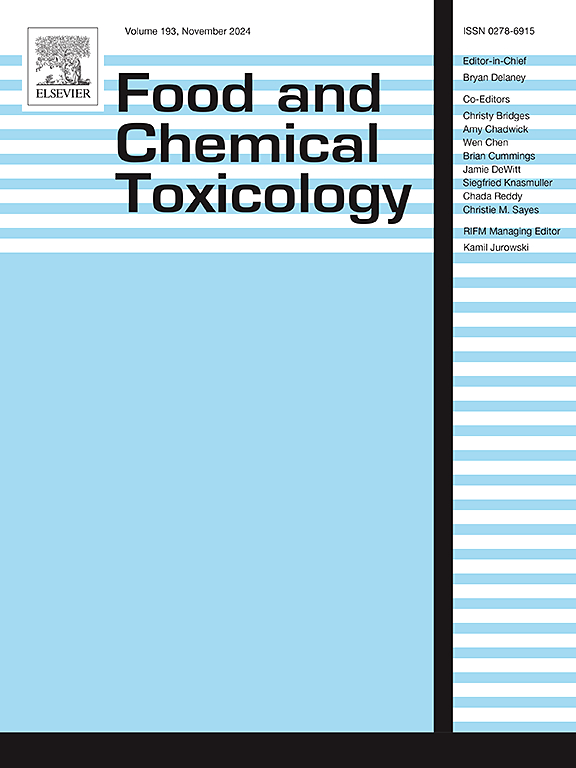Coexposure to fluoride and sulfur dioxide aggravates enamel mineralization disorders in mice by disrupting calcium homeostasis-mediated endoplasmic reticulum stress
IF 3.9
3区 医学
Q2 FOOD SCIENCE & TECHNOLOGY
引用次数: 0
Abstract
Prevalence of fluoride and sulfur dioxide (SO2) cocontamination in the environment poses a serious threat to various human organs, especially the teeth. However, direct evidence linking coexposure to fluoride and SO2 with enamel mineralization disorders is lacking. Here, we investigated the mechanisms through which fluoride and SO2 exposure, either alone or in combination, affects enamel mineralization in mouse and LS8 cell models. Coexposure to fluoride and SO2 resulted in more severe enamel mineralization disorders compared with those in the control or individual exposure groups. The coexposure caused significant pathological changes and retention of enamel matrix. Furthermore, the coexposure upregulated the expression of membrane calcium channels (Cav1.2), calmodulin-dependent protein kinase II (CaMKII), endoplasmic reticulum calcium ion(Ca2+)-release channel (IP3R), and endoplasmic reticulum stress (ERS) marker protein (GRP78), and significantly downregulated the expression of endoplasmic reticulum (ER) Ca2+-uptake pump protein (SERCA2) and calreticulin (CRT). Investigations using Amlodipine (Am), Tunicamycin (Tm) and CDN1163 revealed that the coexposure exacerbated enamel mineralization disorders by disrupting calcium homeostasis and subsequently triggering ERS. Overall, this study highlights that coexposure to fluoride and SO2 affects ER Ca2+ content through cytoplasmic calcium overload, triggers ERS, and increases the risk of enamel mineralization disorders. Activation of ERS, induced by disruption of calcium homeostasis, may play a key role in fluoride and SO2-induced enamel mineralization disorders. The insights obtained from this study should be valuable for devising strategies to mitigate the effects of fluoride and SO2 coexposure on enamel mineralization disorders.

求助全文
约1分钟内获得全文
求助全文
来源期刊

Food and Chemical Toxicology
工程技术-毒理学
CiteScore
10.90
自引率
4.70%
发文量
651
审稿时长
31 days
期刊介绍:
Food and Chemical Toxicology (FCT), an internationally renowned journal, that publishes original research articles and reviews on toxic effects, in animals and humans, of natural or synthetic chemicals occurring in the human environment with particular emphasis on food, drugs, and chemicals, including agricultural and industrial safety, and consumer product safety. Areas such as safety evaluation of novel foods and ingredients, biotechnologically-derived products, and nanomaterials are included in the scope of the journal. FCT also encourages submission of papers on inter-relationships between nutrition and toxicology and on in vitro techniques, particularly those fostering the 3 Rs.
The principal aim of the journal is to publish high impact, scholarly work and to serve as a multidisciplinary forum for research in toxicology. Papers submitted will be judged on the basis of scientific originality and contribution to the field, quality and subject matter. Studies should address at least one of the following:
-Adverse physiological/biochemical, or pathological changes induced by specific defined substances
-New techniques for assessing potential toxicity, including molecular biology
-Mechanisms underlying toxic phenomena
-Toxicological examinations of specific chemicals or consumer products, both those showing adverse effects and those demonstrating safety, that meet current standards of scientific acceptability.
Authors must clearly and briefly identify what novel toxic effect (s) or toxic mechanism (s) of the chemical are being reported and what their significance is in the abstract. Furthermore, sufficient doses should be included in order to provide information on NOAEL/LOAEL values.
 求助内容:
求助内容: 应助结果提醒方式:
应助结果提醒方式:


